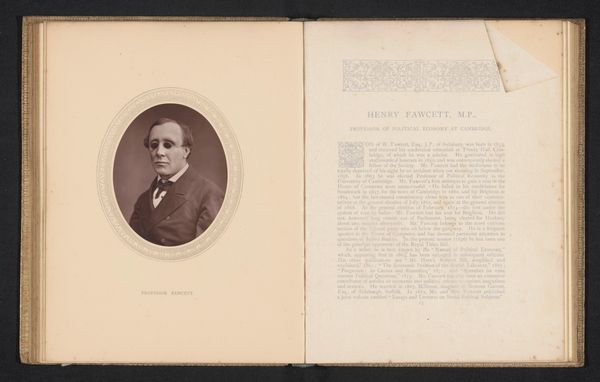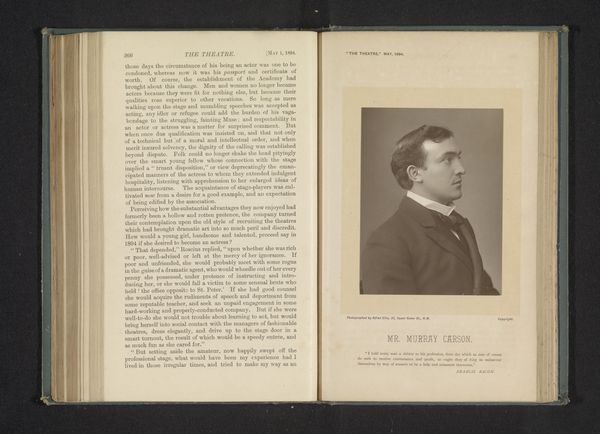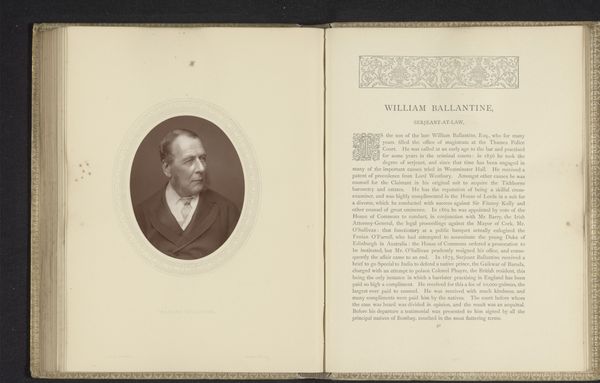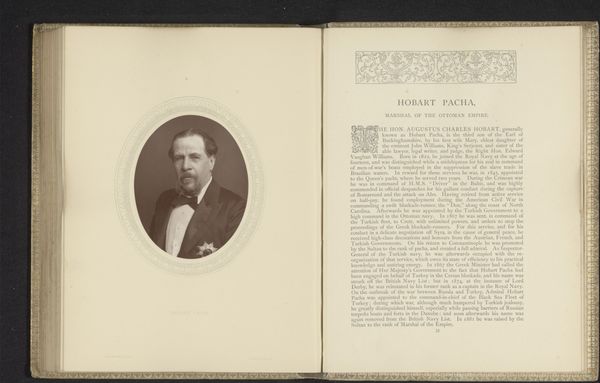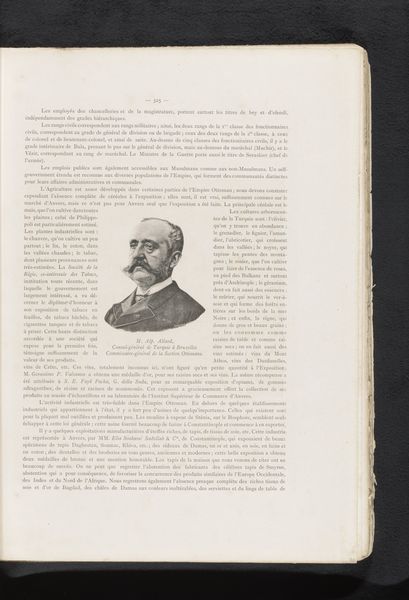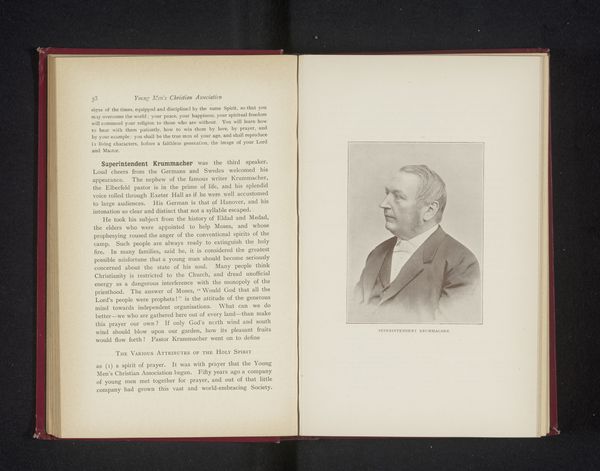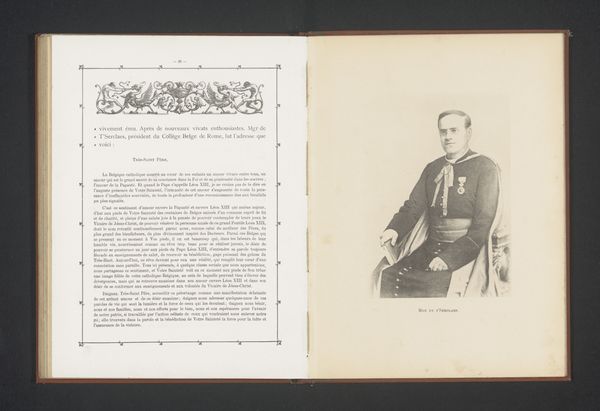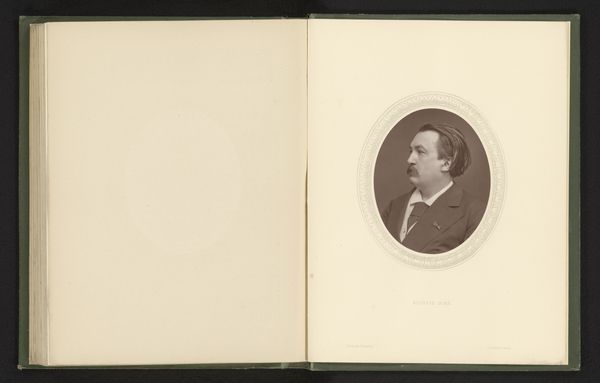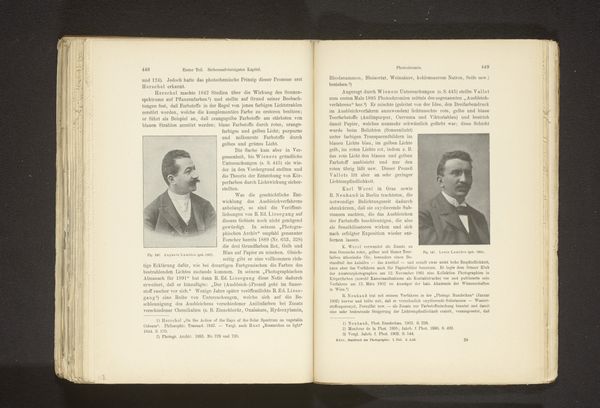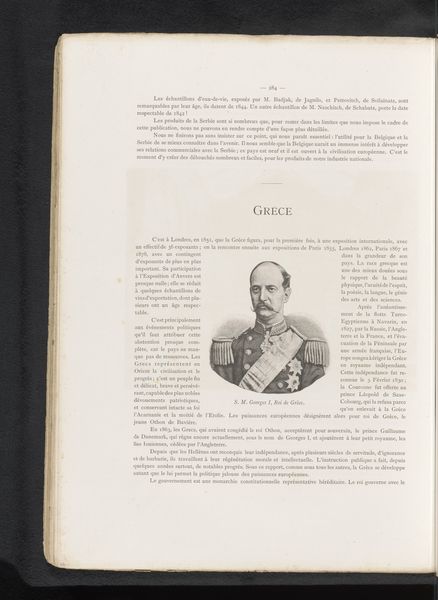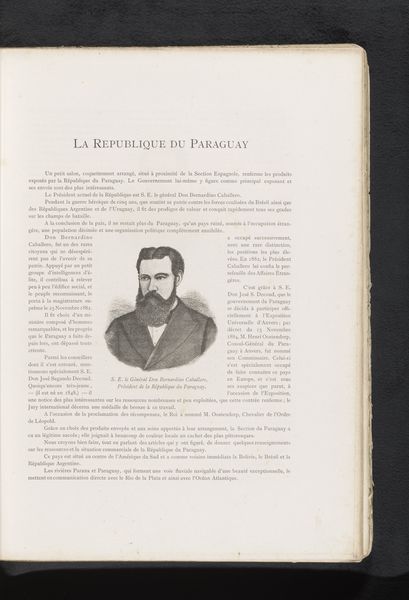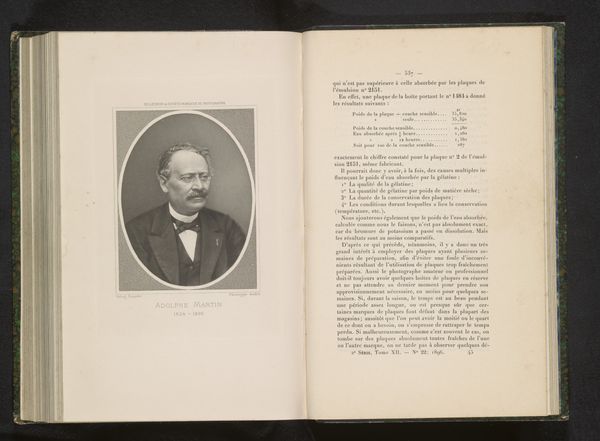
Reproductie van een prent van een portret van Grover Cleveland, president van de Verenigde Staten before 1885
0:00
0:00
print, engraving
# print
#
history-painting
#
engraving
#
realism
Dimensions: height 104 mm, width 99 mm
Copyright: Rijks Museum: Open Domain
Curator: Here we have an engraving dating from before 1885, titled "Reproduction of a print of a portrait of Grover Cleveland, president of the United States." It depicts Cleveland in a formal suit and tie. The image is actually printed in a book, surrounded by text. Editor: The portrait feels so… contained. Stark even. Surrounded by that wall of tiny text, the President seems boxed in, a prisoner of the printed word or perhaps the pressures of his office. Curator: Precisely. Consider how engravings like these functioned at the time. Printed images of political figures served to disseminate a certain kind of public image, projecting power and respectability. Think about the newspapers, magazines, books… Editor: And the biases inherent in those forms of representation! It's easy to romanticize "objective" portraiture, but every choice – the pose, the lighting, even the medium – constructs a narrative, a message to reinforce an existing power structure. Who controls the image controls the narrative. Curator: This artwork resonates within a larger discussion on image reproduction and its effect on our socio-political understanding of presidents. It shows us how deeply engrained such visual systems were, even before the advent of photography. Editor: I agree. When you look at how presidents have been presented, you start noticing how their personas have been constructed over time to support a set of assumptions. This portrait is not just about one individual; it embodies all the presidential visual politics and expectations attached to leadership in America. Curator: I will keep an eye on these early attempts in art as representation and propaganda to draw correlations later in the history of American art. I appreciate the points you made here. Thank you! Editor: Absolutely! Examining art in the context of power is always a worthwhile endeavor, and hopefully, it leaves viewers thinking about the politics of imagery.
Comments
No comments
Be the first to comment and join the conversation on the ultimate creative platform.
